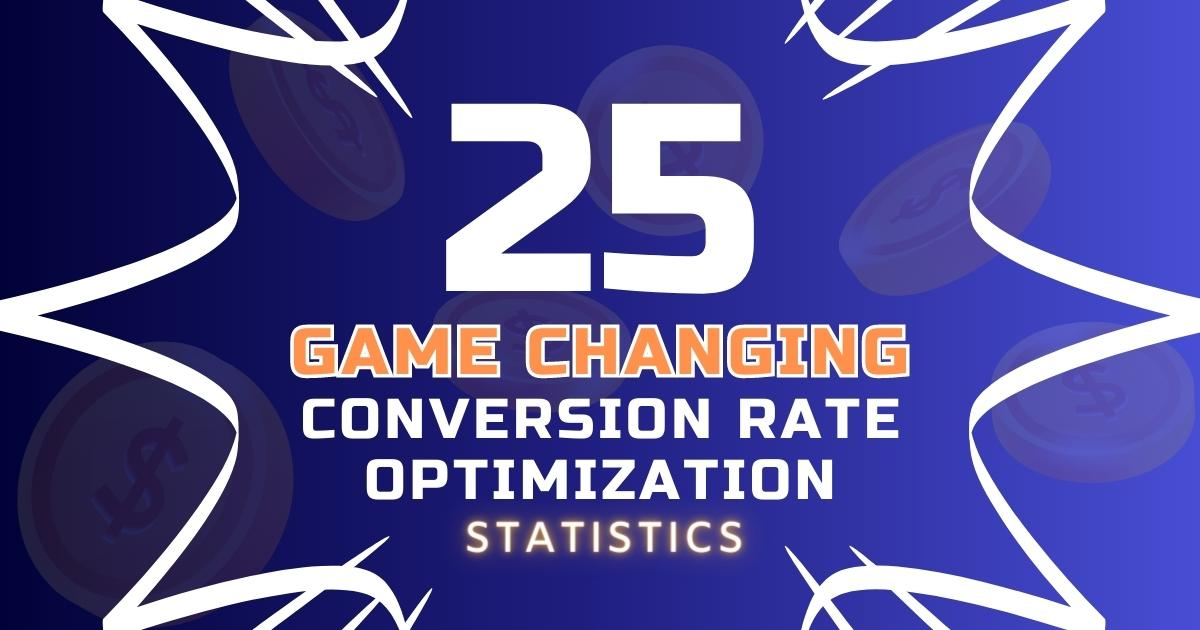
As we advance into the world of Ecommerce, conversions are becoming harder to capture with the massive increase in the number of competitors. The harder they get, the more effort you should do to improve conversions or maintain your conversion rate.
Conversion Rate Optimization has proved to be the ideal method for maximizing your revenues from your current scheme of media spend. As a 1% increase in conversion rate for a website that received 100,000 monthly users can result in 1000 more conversions. That and you still haven’t spent an extra dollar on your media buying.
Today I bring a list of Conversion Rate Optimization stats in order to prove the importance and effectiveness of conversion rate optimization for maximizing your website’s ROI.
General Conversion Rate Optimization Stats for all Industries
When planning to start a new strategy focusing on conversion rate optimization, we generally need some kind of proof that the system actually works.
When you learn a bit about the general Conversion rate optimization stats for all businesses from all fields, you will realize its importance for your business. Below are some generic conversion rate statistics not relevant to specific industries.
The average website conversion rate is 2.35%
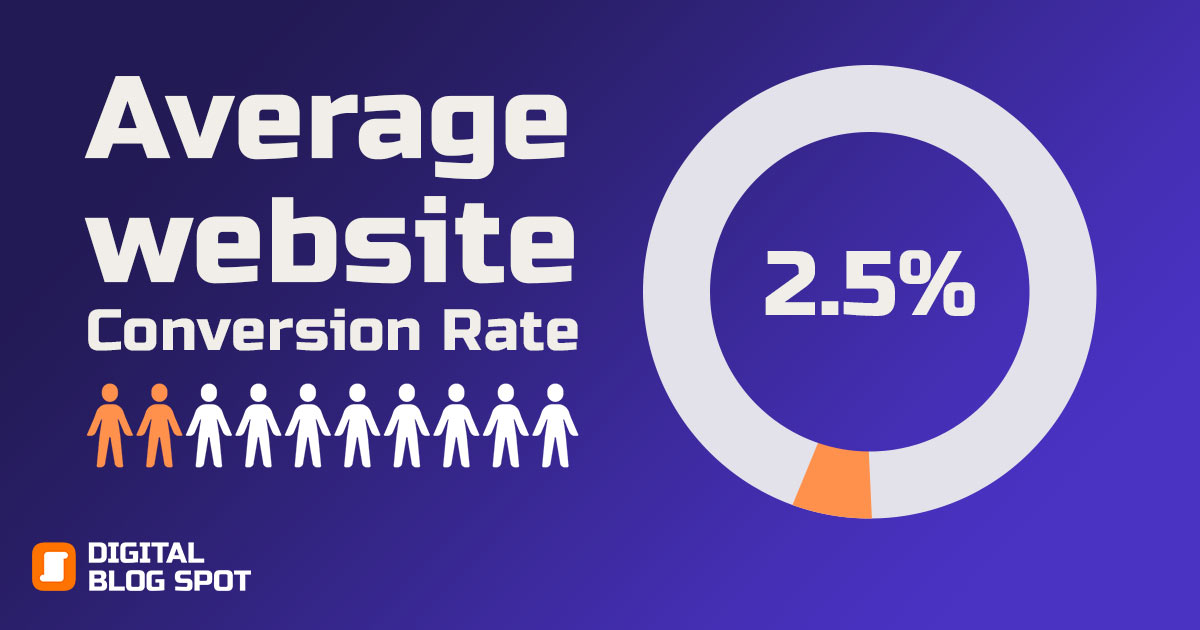
Of course, a conversion rate can vary greatly from one industry to another. But, what we have here is the overall average of all websites, after removing those which doesn’t have conversion tracking set up properly.
The average conversion rate for all websites apart from which industry they are in is 2.35%, which is not a small yet, not a large number. Industries like hospitality may have a bit lower rates and industries like fashion and cosmetics might be significantly higher.
The top 25% of websites have an average conversion rate of 5.31%
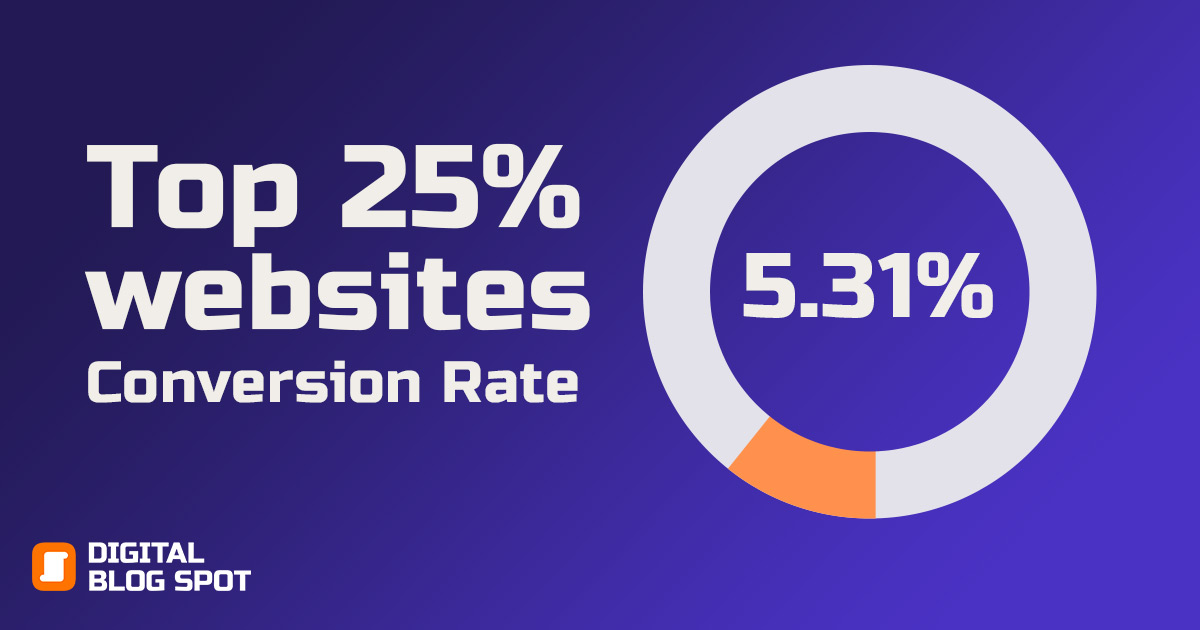
When the top 25% of websites were evaluated for coming up with an average for the high-standard websites, we noticed an average of 5.31% conversion rate.
This means that if you are generating a number of 100,000 users per month, you would end up with 5,310 conversions a month. Imagine how much of a difference you could achieve by pushing your conversion rate to the top 10% as per the following title.
The top 10% of websites have an average conversion rate of 11.45%
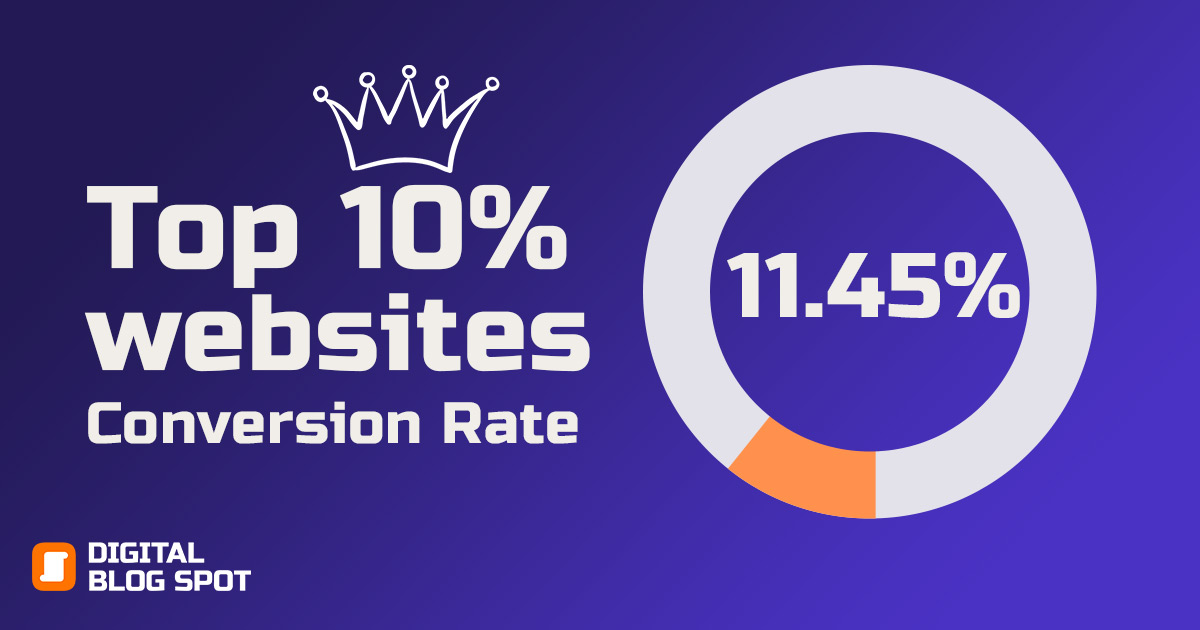
According to a study conducted by Wordstream, the top 10% of websites have a conversion rate of 11.45% or above. And that is not limited to their published landing pages but to the entire website.
This means that the 10%+ conversion rate is not a far-off dream, and can be achieved with a bit of effort if you know where to invest.
Social media converts the worst with an average conversion rate of 1.5%
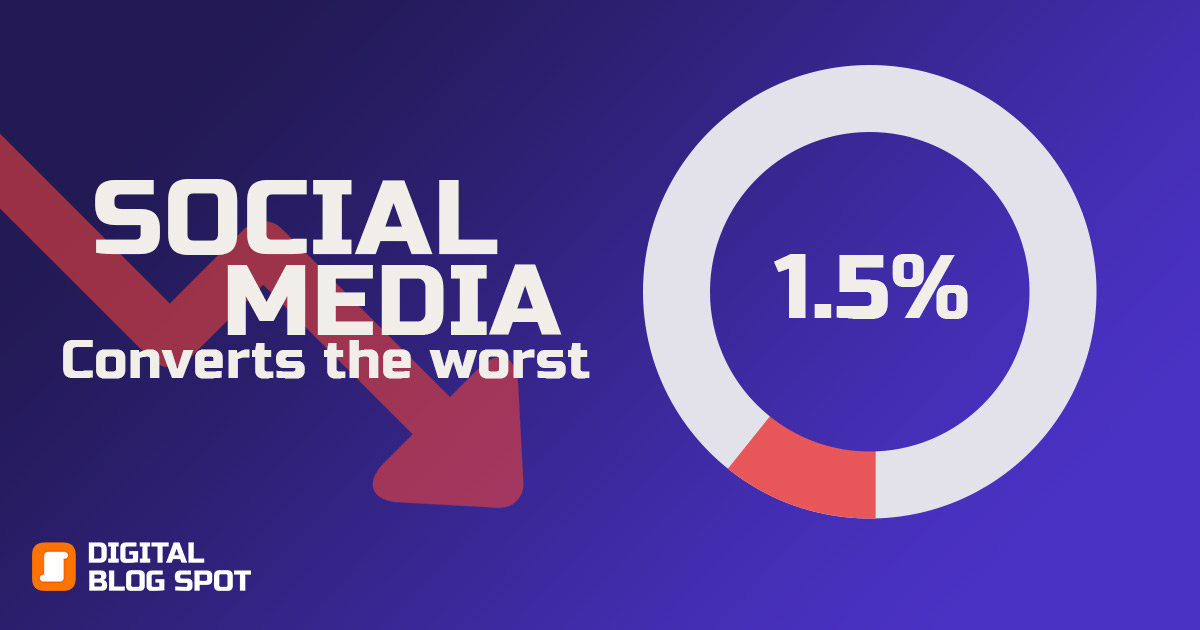
Ruler’s Analytics carried out research among 14 industries to analyze the conversion rate of each traffic source. In their study, social media came out with the worst conversion rate of 1.5%.
The results were a bit different among the different industries, but the differences weren’t huge. For example, health came out first with (3.0%) followed by tourism at (2.7%), and business services at (2.4%). B2B Tech and B2B Ecommerce came out the least with a conversion rate of (0.3%) & (0.4%) respectively.
User-generated content increases conversions by 8.5%
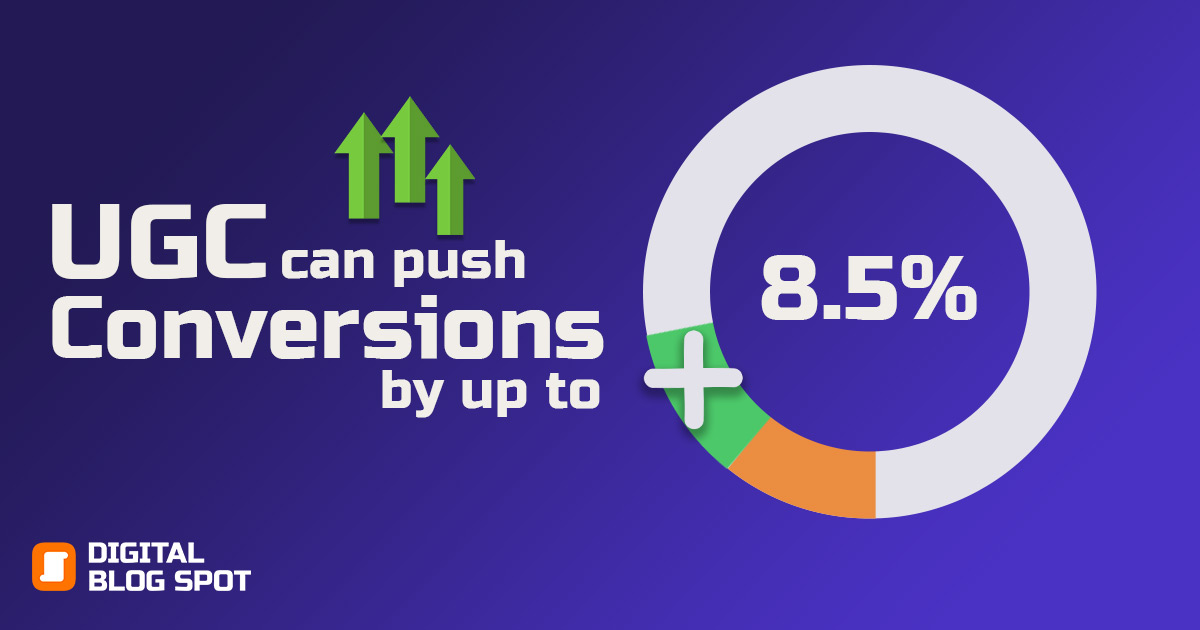
Based on power reviews evaluation of the power of user-generated content (UGC) in increasing conversions, supporting your product page with reviews from previous users can push your conversion rate by up to (8.5%)
That is under the condition that you place the UGC in a viewable section on your product page, where enough users scroll down.
Ecommerce customers on tablet and desktop devices have an average conversion rate of 3.6%
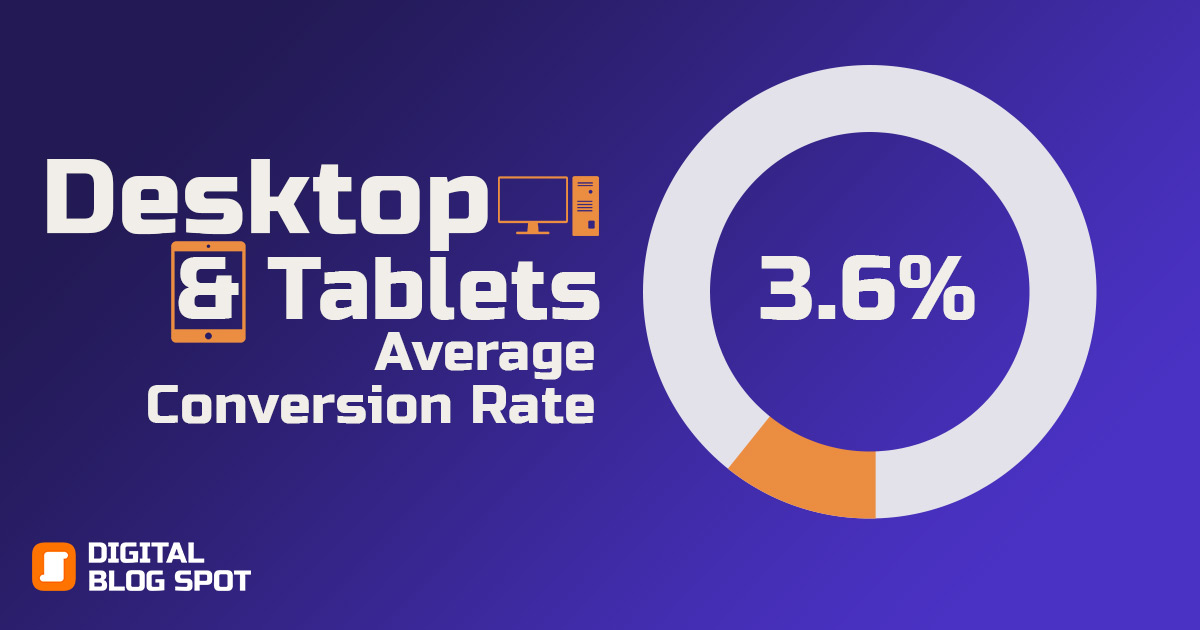
Despite mobile phones being the most used devices nowadays for accessing most websites, the Desktop still has the highest conversion rate of (3.9%) followed by tablets at (3.8%) and mobile devices come at the end with an average rate of (1.8%)
Retail touchpoint adds that mobile phone conversion rates are still double that of the desktop.
Top-converting companies spend at least 5% of their budget on Conversion Rate Optimization
According to Adobe UK for the year 2020, the top companies in terms of conversion rates, spend at least 5% of their budgets on Conversion Rate Optimization strategies.
This assures that the rest of their media buying efforts would be served with professionally studied and tested landing pages, that maximize their conversion rate.
The highest average conversion rate by traffic source is paid search (2.9%)
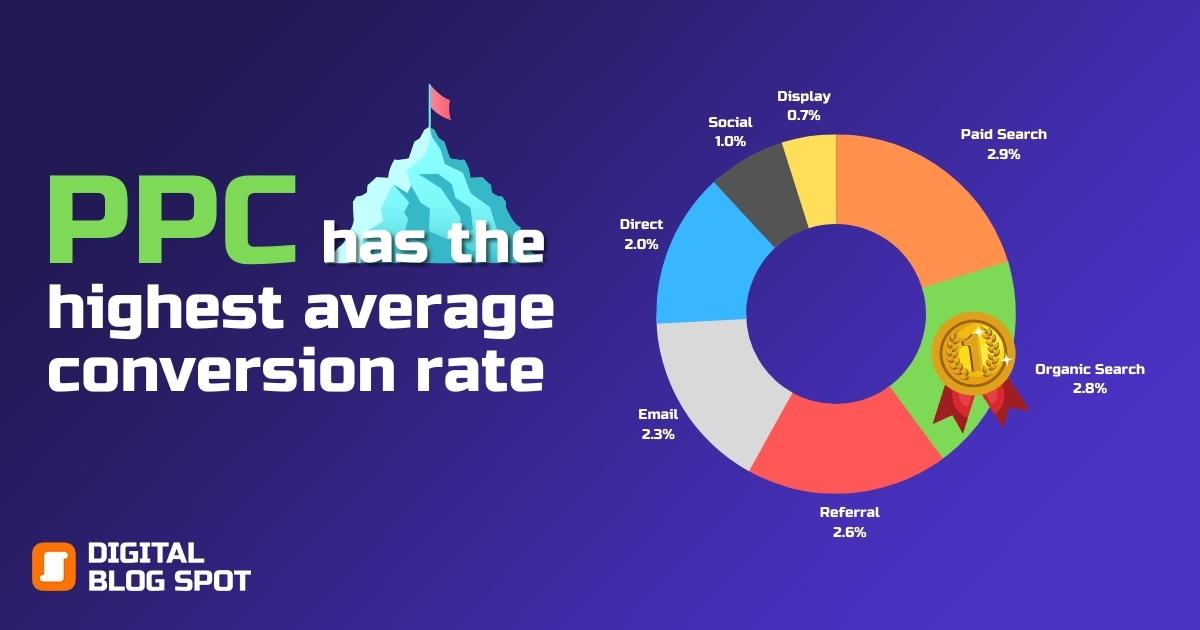
Web traffic generated from the PPC traffic source results in the highest average conversion rate with a score of (2,9%)
That might be a result of the low number of clicks compared to other traffic sources, while the significance of the traffic is unmatched. Search Engine traffic is considered user-to-product traffic and hence gives it the highest conversion rate potential.
In addition, PPC campaigns mostly target commercial intent keywords, giving them an edge over organic search traffic.
Websites with 40+ landing pages generate 12x more leads
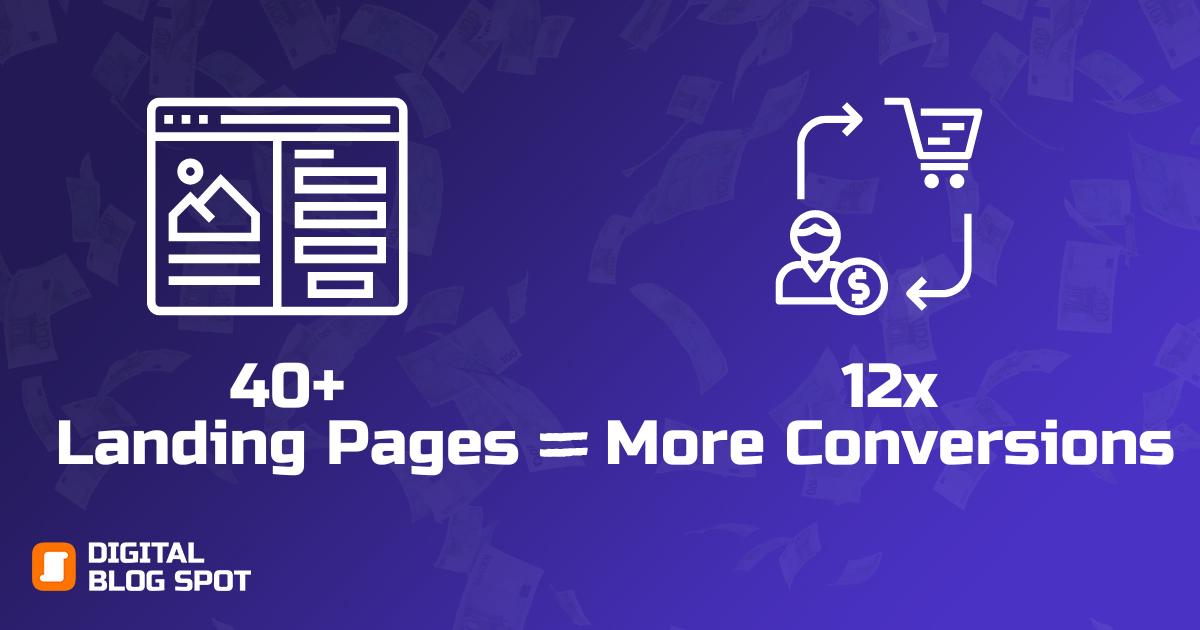
If you consider it a bit, you will realize that it makes much sense.
Landing pages are mostly crafted to achieve a specific conversion objective. Those landing pages pass a lot of landing page test schemes in order to assure the highest levels of conversion rate optimization.
So the higher the number of landing pages, the more tailored your website would be for each desired conversion.
Lead-generation landing pages have an average conversion rate of 11.9%
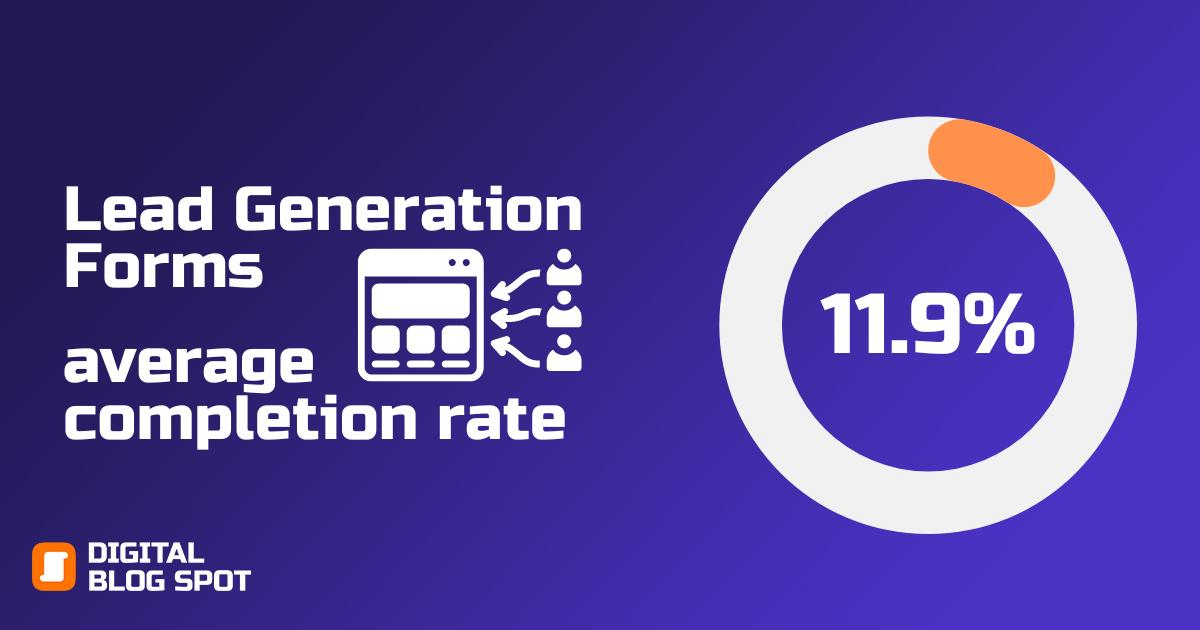
Lead generation is one of the most challenging conversion events that lies out there. Not because people tend to avoid form data entry as it bores them, but because the quality of the leads plays a big role in the success of the campaign.
Directing your lead conversion events to be taken on a separate landing page from the advertising platform can be much more efficient in terms of the quality and quantity of those leads.
Having a separate landing page for lead conversion campaigns, lets you track and capture the data of those converted leads and help optimize your campaign for likewise audiences, across multiple advertising channels.
Businesses that successfully boost conversion rates perform 50% more tests
You can easily understand how that makes sense, by logically thinking that the more time and focus you give something the better you become at it.
Multi-page forms have higher average completion rates than single-page forms

When it comes to online forms, the debate of single-page vs multi-page is never-ending. However, studies have shown that multi-page forms have higher average completion rates than single-page forms.
This is because multi-page forms allow users to focus on a specific set of fields at a time, freeing them from the overwhelming feeling of an incredibly long form.
The result? A more comfortable user experience leads to a higher completion rate and more successful form submissions.
Reducing the number of form fields from 11 to 4 generates 120% more conversions
Want to boost your conversion rates? One key factor is the number of form fields you’re asking your prospects to fill in.
A study conducted by HubSpot showed that reducing the number of form fields from 11 to 4 generated 120% more conversions. Shorter forms can help you generate more leads since they require less effort from the user, making it more likely for them to complete the form.
‘Click Here’ converts better than ‘Submit’

You might be surprised to learn that small changes can make a big difference when it comes to optimizing your call-to-action text.
For instance, studies have shown that using ‘Click Here’ instead of ‘Submit’ can convert better. This is because ‘Click Here’ is a more actionable and personalized phrase that encourages the user to take action, while ‘Submit’ leaves the user feeling uncertain if they’re ready to submit or not.
Marketing automation boosts qualified leads by 451%
Are you looking for ways to boost qualified leads? Consider implementing marketing automation technology.
A study by The Annuitas Group showed that marketing automation boosted qualified leads by 451%. Marketing automation software helps nurture leads through the sales funnel, allowing for a personalized and efficient experience.
By automating repetitive tasks and tracking user behavior, you can provide your prospects with tailored content that increases their chances of converting.
Removing page navigation from your landing pages boosts conversion rates by up to 100%
Simplicity is key when it comes to landing pages. One way to simplify your landing pages is by removing page navigation.
A study by MarketingExperiments showed that removing page navigation from landing pages boosted conversion rates by up to 100%. By eliminating distractions and keeping the user focused on your offer, you increase your chances of converting them into a lead.
User-generated images on product pages increase conversions by 106.3%
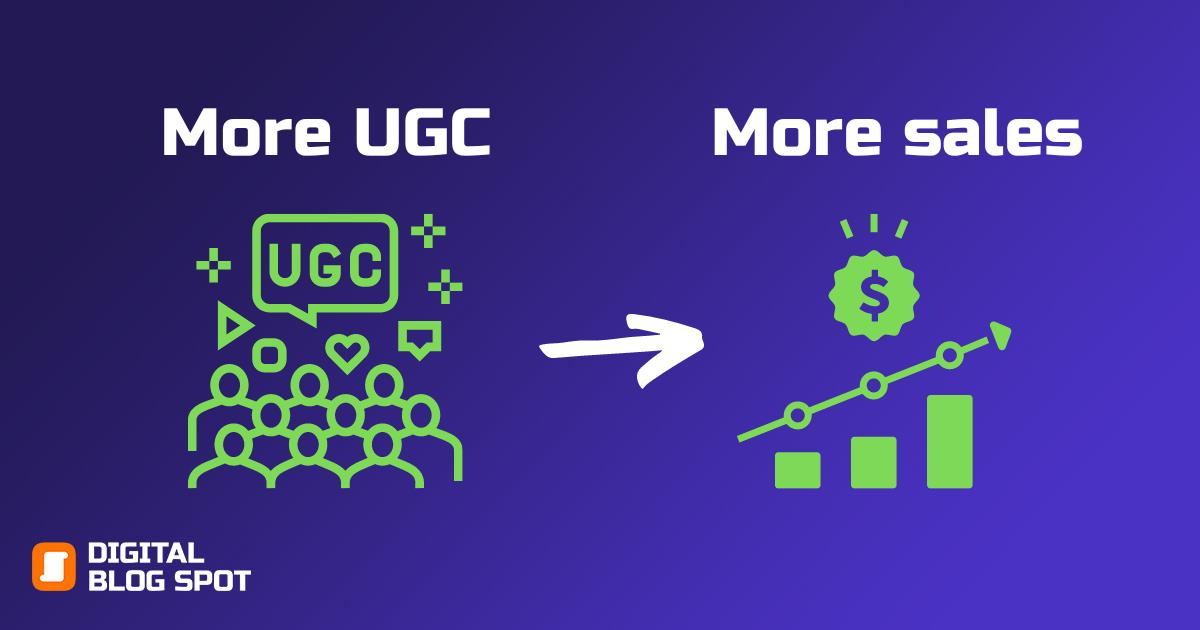
As a general rule of conduct, you would most probably trust a separate customer referring a product, than the product’s own marketers. That’s why user-generated content is much more trusted than product descriptions.
UGC helps build trust and social proof, allowing prospects to get an accurate sense of the product and its quality.
And since seeing is believing, user-generated images (UGC) on product pages can be a powerful tool to increase conversions. A study by Yotpo showed that user-generated images on product pages increase conversions by 106.3%.
Anchor text CTAs outperform button CTAs by 121%
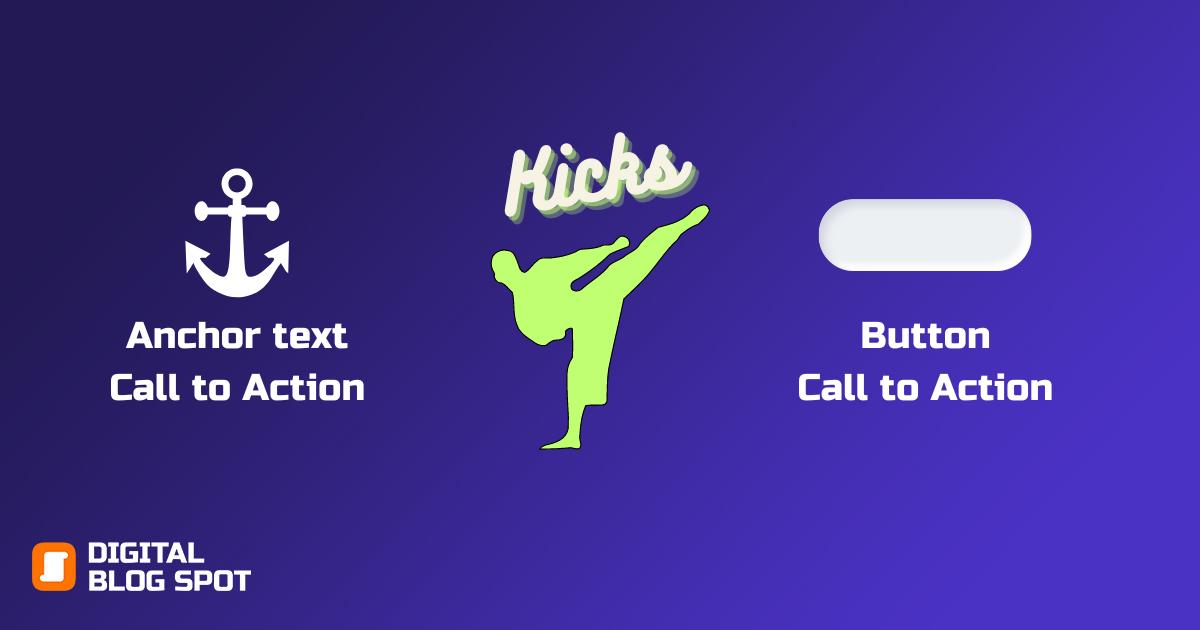
When it comes to CTAs, the design, and placement can make all the difference. But did you know that the type of CTA can also impact your conversion rates?
A study by Copyblogger showed that anchor text CTAs outperformed button CTAs by 121%. This is because anchor text CTAs blend seamlessly into the content, making them more personalized and actionable for the user.
Personalized email messages generate 10% more conversions
Email marketing is still one of the most effective ways to generate leads and maximize conversions. However, personalization is key. A study by Experian showed that personalized email messages generate 10% more conversions.
By tailoring the email content to the recipient’s interests and behavior, you can increase the chances of them engaging with your brand and taking action.
Industry-specific Conversion Rate Optimization Stats
The food and beverage industry has the highest conversion rate in ecommerce with an average CR of 6.2%

When it comes to eCommerce, industry-specific benchmarks can be incredibly helpful. For instance, did you know that the food and beverage industry has the highest conversion rate with an average CR of 6.2%?
This is because food and beverage products are a necessity, and often purchased with higher frequency, making them more likely to convert.
Sporting goods have the LOWEST average eCommerce conversion rate by industry (2.35%)
On the other end of the spectrum, the sporting goods industry has the lowest average eCommerce conversion rate with only 2.35%. This is because sporting goods often require a high level of consideration before purchase, making the sales cycle longer and more complex.
However, by providing detailed product information and UGC, sporting goods brands can still succeed in generating conversions.
The catering and restaurant industry has the highest-converting landing pages with an average CR of 18.2%
For landing pages, the catering and restaurant industry takes the cake! This industry has the highest-converting landing pages with an average CR of 18.2%. This is because the industry often relies on
The average conversion rate for SaaS websites is 7.2%
The SaaS industry has become increasingly competitive in recent years, with businesses constantly striving to improve their conversion rates. According to industry statistics, the average conversion rate for SaaS websites is 7.2%.
However, achieving this conversion rate requires a strong understanding of the buying habits and preferences of your target audience. By focusing on elements like clear value propositions, easy-to-use interfaces, and personalized experiences, SaaS businesses can optimize their websites and boost their conversion rates.
Adding a video to a financial website’s landing page can increase the conversion rate by up to 80%

Videos have become a powerful tool for digital marketing in recent years, and for good reason.
So if you are thinking about adding a video to a landing page, that might be the right thing to do. Adding a video to a financial website’s landing page can boost conversion rates by up to 80%.
This is because videos can help engage visitors, communicate complex information more effectively, and build trust with potential customers.
By creating high-quality videos that address the pain points of your target segment, financial businesses can improve their conversion rates and drive more revenue.
Healthcare and Travel industries have an average conversion rate of 2.4%
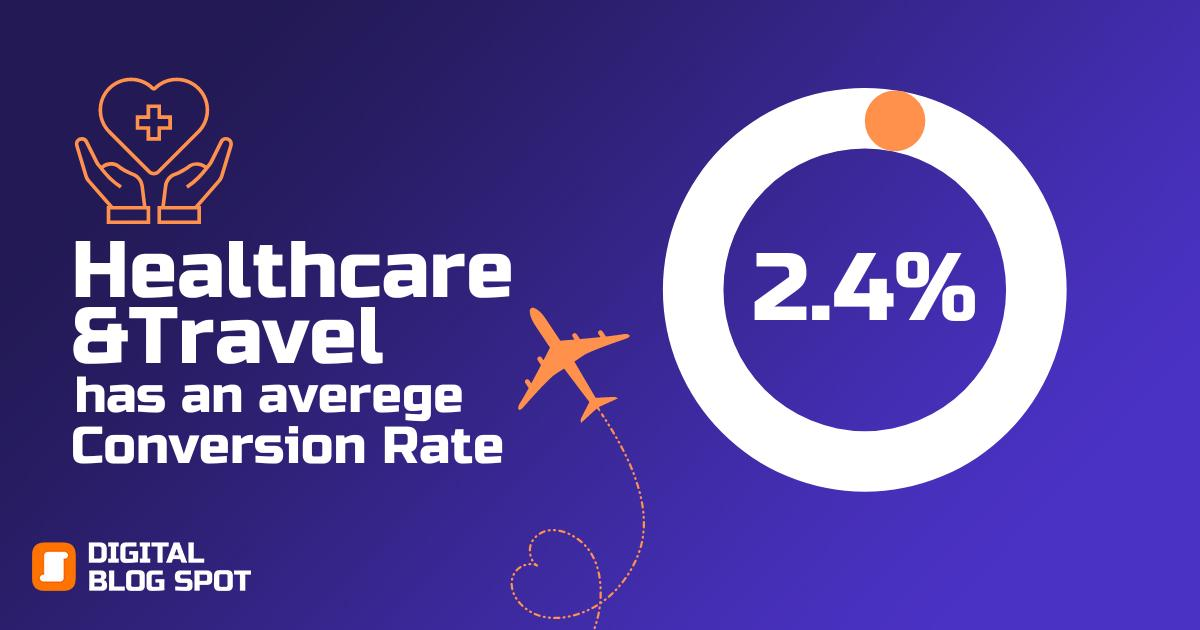
The healthcare and travel industries are both highly competitive, with businesses constantly striving to improve their online presence and drive more conversions. These industries have an average conversion rate of 2.4%.
Despite that, by understanding the unique needs and preferences of their audience, businesses in these industries can optimize their websites and achieve higher conversion rates.
Elements like user-friendly interfaces, personalized experiences, and clear calls to action can all contribute to a successful website that drives conversions.
Personalizing travel website experiences can increase conversion rate by up to 50%
Personalization has proven to be a key strategy for businesses across industries, and the travel industry is no exception.
Personalizing travel website experiences can increase conversion rates by up to 50%. This is because personalized experiences can help engage visitors and build trust, ultimately driving more conversions.
By leveraging personalization strategies like targeted messaging, customized recommendations, and user-centric design, travel businesses can optimize their websites and achieve higher conversion rates.
Conclusion
In today’s highly competitive world of Ecommerce, maintaining a high conversion rate can be a daunting task. However, the good news is that with the right approach, you can maximize your revenues without spending extra dollars on media buying. That’s where Conversion Rate Optimization (CRO) comes in.
Conversion rate optimization has proven to be an ideal method for maximizing your website’s ROI. Statistics show that a 1% increase in conversion rate for a website that receives 100,000 monthly users can result in 1000 more conversions, without spending extra on media buying. This is why conversion rate optimization has become an essential strategy for businesses looking to thrive in today’s digital landscape.
By focusing on elements like landing page optimization, user experience, and A/B testing, you can make strategic changes to your website that will positively impact your conversion rate.
With the help of the right conversion rate optimization statistics, businesses can identify the most effective strategies for their website.
Afterward, implement them to improve their conversion rates significantly.
So, if you’re looking to boost your website’s conversion rate, it’s time to invest in conversion rate optimization. By doing so, you can stay ahead of the competition, maximize your ROI, and ensure long-term success for your business.
What was the insights that capture your attention the most? Write your opinion or share your experiences with me in the comments below!




